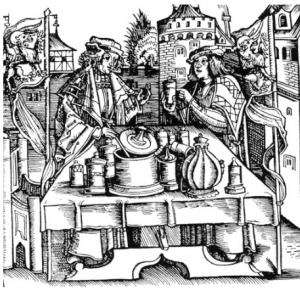 Pearl and bead stringers will be interested to know that recent news from India suggests that pearls may play a role in treating cancer.
Pearl and bead stringers will be interested to know that recent news from India suggests that pearls may play a role in treating cancer.
Ajai Kumar Sonkar at the Pearl Aquaculture Research Foundation in India analyzed the micro-nutrients in several “specially” cultured pearls and discovered traces of metals and minerals known to have major health benefits.
Chief among these is zinc which plays a recognized role in preventing the growth of cancerous tumors.
Cancer may be the “plague” of the 21st century, and if the hopes of Ajai Kumar Sonkar are realized, it may be that pearls play a role in combating it.
Pearls did play a role, at least in the minds of medieval physicians, in combating the Black Plague that swept Europe in the 14th century. (1348-1350)
The Black Plague, as you know, was one of the most devastating pandemics in human history. The plague killed at least 30 percent of Europe’s population. (Some put estimates as high as 60%)
Not surprisingly, remedies against this fearsome disease were frantically sought.
According to G. Frederick Kunz in his 1913 book The Curious Lore of Precious Stones, “A famous class of medical remedies used in medieval times bore the generic name theriaca, or theriac, this designation being derived from the Greek therion, signifying a beast, more specifically a poisonous animal and hence also a serpent. These preparations were primarily antidotes for poison, but were also freely administered for any form of “blood-poisoning,” for malarial infection, malignant fevers and the like.”
According to the Veronese physician Francesco India, one such theriac remedy cured the plague. Its principal ingredients included the “Armenian stone” (a friable, blue carbonate of copper), pearls, charred stag’s-horn, and coral.
The reason India and other medieval scientists and physicians believed in the efficacy of theriac had its roots in the medieval concept of disease. The plague was believed to have been sent by God as a punishment for sin. It was also believed that the plague had its origins in pestilential serpents that poisoned the rivers of Europe.
So, according to Henry of Grosmont, 1st Duke of Lancaster, “the treacle (theriac) is made of poison so that it can destroy other poisons.”
The plague was believed to have been sent by God as a punishment for sin and was believed to have its origins in pestilential serpents that poisoned the rivers.
The news from India is the latest in a centuries old effort, some successful, some not, for using pearls in medicine.

